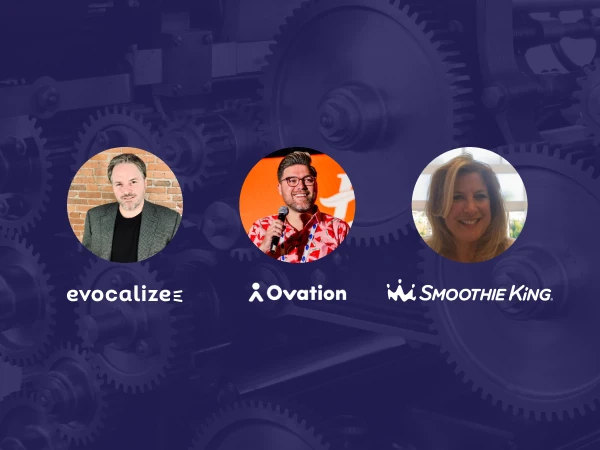Part 2: ChatGPT for franchises – Examples to streamline your business
Evocalize recently hosted an insightful webinar with the International Franchise Association (IFA) on how artificial intelligence (AI) is transforming franchise businesses.
Dan Monaghan led the session from the IFA along with Matthew Marx, CEO of Evocalize, and Justin Ulrich, VP of Marketing at Evocalize. They explored practical applications of AI like ChatGPT for franchises, along with several examples of how to use ChatGPT to streamline operations, enhance customer experiences, and drive performance.
To watch part 1 of the session, click here.
Below is a transcript of the webinar:
Transcript
Justin Ulrich: Well, what’s up everybody? And thank you for joining us for the second of three webinars around the use of AI in the franchise world. As a quick intro, my name is Justin Ulrich. I lead the marketing team here at Evocalize, where we work with franchisors to make local digital marketing push-button easy for their franchisees.
We’re the only platform that leverages AI to not only automate paid marketing based on local data, but also to optimize spend across Google, Facebook, Instagram, TikTok, YouTube, and other channels, all from one place — helping franchisees achieve the best results with their marketing dollars spent. So today we have the pleasure of hearing from Dan Monaghan once again, the founder of WSI, a digital agency franchise system that he created back in 1995.Dan’s a longtime volunteer at the IFA and the current chair of the IFA Foundation. We also have with us the founder and CEO of Evocalize, Matthew Marx. Matthew has over 20 years of experience working at the intersection of technology and marketing, creating digital marketing solutions for multi-location brands that are simple to use, yet bring in real ROI.
So Matt run teams working on applied AI for over a decade and has worked closely with Meta’s enterprise local solutions team to create solutions that work specifically for franchise systems. And if you recall, Dan led the IFA session on AI at the IFA convention in Vegas, one of the highest-rated and the highest-attended sessions of the show.
And based on suggestions from the IFA supply or franchiser supplier and franchisee forums around the importance of this topic, Dan and Matt will be taking us through part two of our AI webinar series, discussing opportunities and challenges of AI and other technology of the future that’s really here right now.
With last session, having amongst the highest registrations and being the most viewed of any IFA recorded webinar, there’s a massive amount of interest in today’s topic, and today’s session is another record breaker for an IFA webinar with even more registrants than last. So we’re obviously really excited to get started.
If you have any questions at all throughout the session, feel free to throw them in the chat and we’ll get to the end of the Q&A session at the end. So with that, I’ll go ahead and turn things over to Dan and Matt.
Dan Monaghan: Great, thanks Justin. So we’ve got a lot of information to cover today and I apologize in advance that it, like the last one, it might be like taking a bit of a sip from a fire hose, but there will be a recording of this session.
You can watch the last session’s recording as well. So we’re gonna just dive in deep into some real practical examples. Our first session was in June and this is part two of that series (watch part 1 here). Over the course of the presentation today, we’re gonna review a few of the important principles from part one of the session.
We’re gonna highlight some of the important developments. It’s amazing. It was only a month ago, and there’s so much has developed in the world of AI. I’m gonna talk about a couple of the key developments that are really important. We’re gonna examine some shared use cases and many of you shared how you’re using AI on the franchise GPT website.
And so I’m gonna pull in some of those examples. In today’s presentation, we’re gonna talk about some other tools that are available to you. We’re gonna talk about building a prompt library and I’ll share one with you that you can build on for your company and, then some of the things to think about in terms of how as business leaders, we can get our organizations ready for AI.
A quick summary of generative AI
So let’s dive in. Just into a little bit of a review. So you’ll remember from the last session we talked about how generative AI is different than some of the traditional AI. It’s not just about making predictions, it’s not just about seeing patterns, but it’s about creating new things. And this is the first time we’ve been able to use technology to create new things, like to write text or create audio or video or write code or compose music.
So this has traditionally been the thing that humans did, right? Like we’re the creators of things, the innovators. But now generative AI is doing that, and that really was born as of about November of last year, is where it really exploded onto the scene. And so there’s a lot that’s happened since then.
We talked about how Google is like a search system, but ChatGPT is like an answer system. So you know it, it’s like walking into the library and you want to get an answer to a question, right? If you ask the librarian he or she might say, well go down to the third aisle and the second shelf, and you know that third book and it’s on page 27 and you go digging it up.
I mean, that’s how it works with Google today, right? You ask a question and it gives you a whole bunch of things to look through to find your answer. But ChatGPT is like the librarian who has read every book in the library, in fact, most of the books in the world. And he or she already knows the answer to that question.
So you just ask the librarian and you got the answer. And so this is going to change the way people use Google, the way they search for things. It will probably change Google’s business model. If you’re a franchisor that’s generating a lot of your leads through information searches on Google, it’ll probably change some of that as well.
New updates in AI: Code Interpreter and Claude 2
So that’s something to think about as AI continues to emerge. A couple of important updates that I want to talk about since the last session that we did. Number one, OpenAI launched something called Code Interpreter. And this allows us to give work to ChatGPT, to assign work, to give spreadsheets to analyze and documents to review and I’ll show you some examples of that today.
Another thing that was really big is that a company called Anthropic launched Claude 2. Now remember, ChatGPT is not the only large language model out there. There are a bunch of competitors to that. It happens to be in the lead, but things are closing in very quickly with Claude 2 that was launched, and I don’t wanna get too technical, but one of the things that you can do with Claude is you can give it a lot more information.
So one of the limitations of ChatGPT is there’s only so much information you can put into it and that you can pull out of it. But what Claude 2 has done is it’s dramatically increased what they call the context window. So we could literally upload a book into Claude and we could say, rewrite that book in the style of Hemmingway and it downloads that book.
You couldn’t do that on ChatGPT because of the size limits of data in and data out. Another thing that’s different with Claude is the training date is 2023. So if you’ve used ChatGPT, you know how you get that message. It says, I’m a language model trained in 2021, I don’t know that. Well, Claude was trained in 2023, so it’s much more current and the cost has gone down even further.
So I’m in the digital agency industry and I can tell you that a professional writer will charge anywhere from 25 cents to 40 cents a word. So if you’re gonna ask a, a copywriter to write a thousand words, they’re gonna charge you $250 to $400. Well, the cost with ChatGPT is about 16 cents, and that’s what GPT 4. Claude drives that down to 4 cents.
Now we’re arguing over pennies here. Either way, it’s hugely disruptive, but depending on the application, Claude really does reduce the cost of AI. And here’s a grid here that shows you some of the different large language models, some of the strengths, the weaknesses, etc. So at the end of the day, what AI does is it creates a whole new range of possibilities for us as business leaders in what we can do.
New possibilities because of AI: Scaling white-collar working
It’s the first time ever in humanity that we can actually scale white-collar working. So what we have to think about as business leaders is we have to say, what would we do with a team of free college grads? You know, how would we put them to work? How would we use them in our business? And remember, it’s not just about the librarian anymore.
We’re talking about, you know, a law graduate, an MBA student, a medical student. This is performing in the top 10% of the intellect, or the top 10% of performance of university grads. So we’re not just talking about grads, we’re talking about smart grads. How can you apply this in your business? If you had the ability to have unlimited free interns, what kind of superpowers would that give you?
Discover your new superpowers
And I don’t know how many of you have seen the movie Shazam, but this guy ends up getting a superpower suit and he knows he’s now got superpowers. He just doesn’t know what they are. So he tries running through a wall and that doesn’t work. He tries jumping out a window, he lands on his face. That doesn’t work.

But ultimately he figures out that he can point his fingers and lightning bolts shoot out the end of his fingers. He found his superpower, and I would proffer to say that as business leaders, we all have this new superpower. The question is, do we know how to use it? Because it’s important to understand that our competition also has this superpower suit, and whether we use it or not, they will.
So we need to keep up with this and learn the power of the suit. So I’m gonna show you some of that power today in this presentation. Many of the examples I’m gonna use, I’ve actually pulled from that franchise GPT site. On the site, we had something we called an idea informer, where people shared their different prompts and how they’re using AI and they’re using ChatGPT for franchises and we were able to collaborate on ideas with each other.
Examples of how to use AI for marketing your franchise
So I’m gonna pull some of those ideas into today’s presentation. We’re gonna start with a few simple examples, and then we’re gonna talk about plugins. Then we’re gonna talk about Code Interpreter. And again, this is gonna be kind of like going to the buffet. I’m gonna show you some samples of a bunch of different things.
We’re not gonna be able to go too deep because the limits of this webinar. But I will give you an overview of some of these different applications. So first of all, we’ll also look at it across the different business units. You know, almost every area of your business you’re able to use ChatGPT or AI in some format, and I’ll show you some examples of that.
Train ChatGPT with your brand content
So first of all, let’s look at a fairly simple example of how we can train ChatGPT for franchises. You know, we’re used to asking it questions for those of you that have used it, but we can actually give it some more information so it can be smarter. So it’s already like that, you know, that university grad, but we’re gonna give it some context.
So one of our businesses here, Recruiting in Motion. We’re gonna go to the website and we’re gonna actually use a blog to train ChatGPT, and we’re gonna ask it to create some tweets. So we go to that site, let’s see, and I said create a series of tweets from the following blog post.
So I copy and paste the content off this blog post. I paste it into ChatGPT. And I’m just using version 3.5. I’m using the free version of ChatGPT here and off it goes and it cranks out a bunch of tweets. Now it knows that a tweet is limited to 280 characters is putting in hashtags. It’s putting in some little graphics and emoticons throughout, and boom, there I’ve got a handful of tweets.
So that’s pretty simple. But now let’s, let’s do the same kind of thing, but now we’re gonna ask it to write a compelling email. Now remember, it already knows how to write a compelling sales-driven, response-driven email, but it doesn’t really know what about, right? So just use an example of one of our businesses, Code Wiz, where we teach kids coding and robotics.
We’re gonna go to that website and we’re gonna, again, take some content right off the website and we’re gonna train ChatGPT for franchises. So I’m gonna say, here’s some text from our company’s website. Please write an introductory response-driven email for our customers. Copy and paste into ChatGPT and again, I’m just using 3.5.
We don’t need big brain power here from ChatGPT to do this, but very quickly it writes an email that we can send off to the customers. Now remember, we’re gonna still be able to read this and we’re gonna be able to edit it and make changes, but we’ve given it enough context that it can do a much better job doing that task that we’ve asked it to do.
Summarize customer feedback
Let’s take a look at another example that came from the franchise GPT site. We’re gonna ask ChatGPT to summarize some customer feedback. Now whether you got that feedback through your NPS system or a customer survey in this particular case it was a customer survey with one of our businesses, Tutor Doctor, and I just told the system, you know, below is what customers are saying about our business. And I cut and paste about 150 different comments and I just plugged it right into ChatGPT. Now I’m gonna use the plus version here, which is the paid version. It’s 20 bucks a month. I want a little bit more brain power because I’m asking it to summarize all this content.
And I asked it to put it in a table format and give me a column for materiality so it can actually tell me, you know, did we hear this a lot or we heard it a little. And it is actually pulling copy, like comments right out of the text for me in this summary. But it’s giving me the main themes of what the customers are saying about the business.
Now what’s interesting here is that some of that feedback was actually in Spanish and ChatGPT actually converted that right on the fly and integrated it into its responses here in English. And so there’s a summary of everything that it heard from the customer. This is actually where it gets really cool.
Like now we’ve trained ChatGPT on the voice of the customer. What else could we do now that it understands the way our customers are thinking? Well, what if we could ask it to create a Facebook ad or a series of ads using the voice of the customer? You know, often as marketers, we spend so much time talking about the features of our products, and we don’t talk about benefits.
We don’t look through the lens of the customer, like what’s really relevant to the customer. And so I’m gonna actually use that feedback from the customer, and I’m gonna actually ask it to write some Facebook ads. Now, it’s important as marketers that we’re constantly testing, we’re testing to beat our best-performing ads.
Because the market changes, the customer changes, the competition changes. So we have to keep moving and keep testing. And sometimes we get a little stuck and we stop testing. And because we kind of hit a block, well, ChatGPT can help us bust through that block with new ideas and new content. And what’s beautiful here is all this content was created with the voice of the customer through the lens of what they find most valuable about our services.
Now, what else could we do with the voice of the customer? Now, for those of you that are marketers, you’re probably familiar with the Storybrand framework. So Donald Miller wrote a book, and in that book, he outlined a framework for how to communicate and influence our customers. And he laid out seven stages to this, this seven-part framework.
Well, let’s ask ChatGPT if they’re familiar with the Storybrand framework. Of course, remember it’s like an MBA student. Of course, it’s familiar with the Storybrand framework. So it tells me that it is familiar with it, and it gives me a summary of what the Storybrand framework is.
And remember, this is a framework to influence and develop compelling communication and compelling copy to influence our customers or to drive response, how to tell the story of our brand. Well, now I’ve said, “Can you build a Storybrand message guide for Tutor Doctor using that customer feedback again, the voice of the customer?”
And now it’s created a whole Storybrand framework. And by the way, we just saved ourselves five grand because a certified Storybrand consultant charges five grand to do just this. And by the way, they’re doing this through talking to you. We’ve gone one step beyond. We actually did this through talking to the customer. This is the voice of the customer in our Storybrand framework. So there’s so much we can do with the voice of the customer.
Convert text to audio files
I’ll give you another example in marketing just to think about. It’s not ChatGPT, but it is generative AI. So there’s a very cool platform called ElevenLabs. They’re the leaders in going from text to voice.
And so you may have some documents, some white papers. You know, several of our brands, we’ve actually written books that we give to our customers. You probably have some written content. What if you could convert that into an audiobook? What if you could convert that into a podcast and turn it into a lead magnet where people download that audiobook, download that podcast?
And at the push of a button, you’ve created those audio files using ElevenLabs. Now you can clone your own voice in seconds, or you can use one of their pre-developed voices, but very effectively, you can create new forms of media for your customers.
Maximize your first-party data
One last thing I’ll say about marketing is this principle of building out your first-party data. And what first-party data is, is all the things that we know about our customers. It’s the content that’s in our CRM, right? Obviously their personal information, but also their persona, their preferences, all the communications you’ve had with them. The reason this is important as marketers, you know that Google’s third-party cookies are going away so that’s one reason you need to build your first-party data.
But here’s the big reason that relates to AI. All the major CRM platforms are gonna be leveraging first-party data with AI going forward. So, HubSpot, Salesforce, all these platforms are going to be using AI to take what you know about your customer and build out very personalized journeys in your communications with them. So collect as much of that as you can going forward in your CRM.
Examples of how to use AI for HR
Let’s talk about HR. I mean, HR is one of the most text-heavy areas of the business. And you know, we’re writing job descriptions, offer letters, decline letters, policies, procedures, etc. And so when HR people find out about ChatGPT, it is empowering for them.
It’s like a weight has been lifted off their shoulders because there’s so much you can do with it. But again, let’s remind the HR people about how they can train ChatGPT to incorporate the voice of your brand, incorporate your values into the communications.
I’ll just share with you an example. One of our businesses, College Pro is a youth entrepreneurship business and window cleaning. And so we wanna create a job ad but we wanna bring in people that reflect our values. So I said, “Create a student window cleaner job posting using our values.” So I go to the site, I cut and paste the values and instantly it creates a job ad for a student window cleaner that’s reflecting all of our values.
Remember, if we’re gonna deliver on our brand promise, we’re gonna deliver to our customers, we wanna begin with people that reflect our values, that reflect our culture. And so you can not just do this in job postings. You could do this in offer letters, you could do it in policies and procedures. So again, across the HR department, there are so many uses of ChatGPT.
Using AI for training content
Let’s talk about the training department. Now, in the last session, I talked to you about how we can use avatars in our training. There are so many advantages to that. You know, it’s not person dependent. So if you’ve got a training video and then that person in the video is no longer with your company, you know, you don’t have to worry about getting releases signed.
It’s very easily updateable as content changes. You know, there are no studios editing any of that production stuff. It’s just simple, cost-effective. And I’ll show you an example of how we did this with client onboarding. So this is actually going straight out to the customer. We did this at WSI.
So you can incorporate the avatar in different ways, you know, throughout your training videos. You can integrate forms, whatever. So you get the idea. We, in fact, with Synthesia, you can actually create an avatar of your founder or someone within your business. They’ll actually create an avatar and it’s so lifelike. It is very powerful.
Enabling plugins on ChatGPT for franchises
So now let’s just pivot to talking about plugins. Now you’ll remember in the last session I talked about how plugins were kind of like apps on your smartphone, right? They require ChatGPT+. So you need that paid version, the $20 a month.
But I’m gonna show you how to enable plugins in ChatGPT for franchises. So you go down to the settings there and you’re gonna click on beta features, and then you’re gonna make sure that plugins are enabled and code interpreter is enabled. I’m gonna show you how to use that in a few minutes as well. And that’s it.
You’ve now got plugins enabled for ChatGPT. There are over 600 plugins right now. There’s a bunch that are being released every week. They keep adding to it. You can use up to three plugins at any given time. So you know how on your smartphone, you use one app at a time. You can actually use three plugins at any given time. So I’ll show you how we can add plugins to our system.
So we’re gonna go to GPT4, we’re gonna go down to plugins. And now we’re gonna be able to scroll through the different plugins we already have and we can go to the plugin store and we can look at what the most popular plugins are. We can look at all the new ones, we can look at the ones we’ve got installed. I’ll actually show you how we can install a plugin here. It is really simple. It’s one click. So let’s install the Wolfram plugin and instantly it’s now active. On ChatGPT for me, and I can see which plugins I have and which are activated by that blue check mark. So I can have three at any given time, as I said, and I can tell which three are activated based on the check mark.
How to use specific plugins with ChatGPT
So now let’s go ahead and use a plugin. I’m gonna show you what a plugin can do. And again, this is the tip of the iceberg because there are over 600 of them. But I’ll just give you an idea of how they operate.
Create images with Midjourney and Photorealistic
So you might remember from the last session I was talking about how we can create images, how AI is creating Hollywood-quality images. In fact, Hollywood studios are using Midjourney. But you need to know how to write a prompt and, you know, you can use fairly basic prompts, but ChatGPT can actually write prompts for you.
So let me show you an example. One of the plugins that I like is something called Photorealistic. And I can say to the prompt here is, “Give me a photorealistic picture of a lion walking me across the African plains.” I mean, I could write that much, but I couldn’t write this prompt here that it’s cranking out for me.
In fact, it’s gonna crank out a whole series of prompts for me. I’m just gonna take one prompt, I’m gonna plug it into Midjourney, and it’s going to go and create that image for me. And now if you look at that prompt, I mean, it’s getting into, you know, design this in the style of this photographer and using this lens and this kinda lighting.
And it’s giving me four different options. And I like the one at the top. Let’s see the top left. So I’m gonna say up level, that image. And now it creates a high resolution of that particular image. And that’s mine. That’s done, that is my image. It’s not out there on Google Images. It’s not owned by anyone else. That is my image. I can use it however I want.
So you can imagine how disruptive this will be for marketing and all the possibilities of what we can do. And I can show you some of the things. We can zoom in, we can zoom out, we can move this into motion. All kinds of stuff we don’t have time to get into today, but very powerful, what you can do with Midjourney.
Summarize videos with Video Insights
I’ll show you one other example of a plugin. Let’s say I wanna summarize a video. So there’s this YouTube video. I wanna actually, I don’t wanna take 16 minutes to watch it. I wanna actually just get a quick summary of this. So one of the plugins I like is Video Insights and I enable that plugin and then I go down and I just say, please summarize this video.
And I just drop in the YouTube link. Off it goes out to YouTube, downloads a transcript, pushes that into ChatGPT, and creates a summary of that transcript for me. Now here’s an important thing to keep in mind. Remember, ChatGPT is not connected to the internet, but because I’ve got plugins, I’m now connected to the internet.
It’s pulling that live right off of YouTube. So a lot of these plugins are important because of the way they connect you live to the internet. And here’s my summary. It’s done. I don’t have to watch the video. I can just read the summary.
Examples of using Code Interpreter
Now let’s talk about Code Interpreter. This is a game-changer. This is like a couple of weeks ago. It became available to all of us that have ChatGPT+, by the way, with the way the world is changing and moving to AI and how this is gonna disrupt the economy and business and the world, I would highly recommend that people invest in the $20 a month ChatGPT+ to start playing with some of the power you can unlock with this.
But anyhow, you need plus to use Code Interpreter. And again, instead of asking ChatGPT questions, we’re going to give it work to do. So imagine the intern sitting in the cubicle beside you, that MBA student or that law student, we’re gonna launch some stuff over the edge of the cubicle and actually give them some work to do.
Spreadsheet analysis
So here’s an example. I’m gonna ask it to analyze this spreadsheet. Now I pulled up a royalty spreadsheet from one of our brands from 10 or 12 years ago, and I just said, attached is a royalty report. Now you see that little plus button that allows me to add a file and I’m uploading a file into ChatGPT and I just said analyze it and give some of the important observations.
Well, I haven’t even asked it anything specific. I just said, tell me what you see. That’s interesting. So it goes through, it highlights the types of information that are in this, and then it says, wait a second, I got a problem because some of this information is not in numerical format. Some of it’s in text.
And so I gotta convert that into numerical. It’s actually deciding on all the steps that it has to do in this process. I’m not telling it what to do. It’s actually figuring this whole process out itself for what it needs to do, to come up with some interesting observations for me. And so here are a series of those observations.
And again, it’s doing this all on its own, driving this process itself. Now I could have asked it, “Give me correlations between first-year and third-year franchisees. Give me a trend line of this year, same-store sales versus last.” It will actually give you charts and graphs in Code Interpreter with this data.
It all just depends on what you want to know. Right now I haven’t even told it what I want to know, and it is come to the end of what it said and then I said, “Give me more,” so off it goes and it’s getting more. So the point is that we can ask it to do anything we want, but even on its own, it’s figuring out what’s interesting to it.
Call analysis
This is an exciting, powerful application. And some of you that are in franchise development or in franchise coaching, you’re gonna get this when I show you this. Imagine if we could use ChatGPT as a business coach or as a sales trainer. Now watch this. I’m gonna ask it to actually analyze a transcript of a sales call.
Now that could be a franchisee selling to a customer. It could be your franchise development department speaking to an applicant in the process, right? Like, how many of these calls do we really listen to and coach and audit? What if ChatGPT could do that for us? So I’ll use an example again, one of our businesses, Code Wiz, we’re gonna analyze a customer sales call.
So the first thing I’m gonna do is I’m gonna upload the framework that we use to train franchisees on how to effectively sell the Code Wiz services. So this is a Code Wiz consultative selling framework. So again, this smart intern, they’re smart, but they don’t know Code Wiz and they don’t know our sales process.
So we’ve now uploaded that and now they know it. And so now I’m gonna say attached is a transcript of the call. Now there are lots of apps, even Zoom today, you can pull a transcript right out of it. So attached is a transcript of this call. “Please analyze the call under each of these sections.” It knows there are eight sections of our process, and so it’s gonna analyze each one of those sections.
It’s gonna give a score on each one of those sections. It’s gonna provide feedback to the franchisee on each one of those sections. It’s gonna pull little elements out of the transcript and actually provide that as supporting the coaching feedback. And at the end of the whole process, it’s gonna score the whole call on a score of one to 10.
Now, if we’re seeing it’s a high score, it’s an eight or nine, we probably don’t need to do much else. But if we’re seeing a four or a five now we need, we know where a real human needs to jump in. A real business coach jumps in and can actually provide that franchisee the support they need. So now we at least know where the issues are.
And again, we can just email this directly off to the franchisee and the business coach. So overall, a score of 8.75, we’re probably good. We probably don’t have to dig into this one. Now just think about this. What if there was a way that every one of your calls was automatically downloaded, the transcript ripped out of it, it was pushed into ChatGPT, the analysis was done, an email goes off to your sales coach, an email goes off to the franchisee.
Consider workflow automation
Imagine if we could build that, what that would actually do? Well, we can actually do that through workflow automation. And we’re doing this in several of our brands. We’re helping some other franchisors with this as well. And it’s not so much that we’re replacing a job that someone’s doing. The truth is that in many cases, no one’s doing this.
We just don’t have the capacity to listen to every, you know, call that someone in your franchise development department is doing, or, you know, your franchisees are doing. But we can do this at scale for the first time ever. So again, scaling white-collar work and the cost is pennies.
Custom applications (ChatGPT API)
Now there are also custom applications, ways that we can use ChatGPT through APIs. And what is an API? It’s a way of connecting two applications together. It’s kinda like tunneling directly into the brain of ChatGPT. So the question is, are there applications within your business where you would want to plug directly into ChatGPT through an API?
So let me give you an example of how we’ve done that. So one of our businesses, Tutor Doctor, when the tutor tutors the student, they create what’s called a session report. And families love this. It’s like a report card, but it comes out after every tutoring session. The problem is that it takes the tutor time to do that. It takes the franchisee time to review them because believe it or not, imagine a spelling mistake or a grammatical going over to the family that’s been written by a tutor.
Doesn’t go over well. So franchises spent a lot of time reviewing those session reports and then sending them to the family. Imagine if we could, and what we actually built is something we call AI Assist. So built right into our software, the tutor plugs in all of their information from the session report, and they don’t have to spend as much time because ChatGPT is gonna clean it up.
We hit the AI Assist button, it’s now going over into the brain of ChatGPT. It is tunneling into ChatGPT’s brain, and it’s creating a fully cleaned up, in the voice of the brand, a friendly session report and they can accept it or they can keep it. The franchisee has an AI assist button as well.
So what does this do for the business? It streamlines the work of the tutor. It minimizes the admin for the franchisee, the unit economics, the profitability of the business. We’re making it more profitable by stripping out the admin and the families are getting these things in real time very quickly instead of waiting for them. It optimizes the customer experience.
Think about the areas of your business where there is admin going on, and where else can you use AI. I’ll pass this next one. So again, just you might wanna talk to your team about that to brainstorm on where some of the ideas you could use AI in your business.
There’s a whole range of different tools that you can use that are actually using AI or ChatGPT built into the tool. Just the way we built it into our application. There are many tools out there and we’ve got Matt on the line who will show us his tool in a second. I’ll show you one first.
AI tools available on franshiseGPT.org
And by the way, on the franchise GPT site, we list a whole bunch of different tools. All the leading tools you can find on there as well. But video editing is an example of, you know, right now we’re living in a short-form video world, right? It’s all about short-form video if you’re in marketing.
It’s not about those long videos on the site anymore. It’s all YouTube shorts. It’s Facebook video, it’s TikTok. How do you compress all that stuff down and rip out the most impactful 30 seconds or 60 seconds? A tool I love is called OpusClip, where you can just upload a video or you can add a YouTube link and automatically it pulls the content out of that and defines which moments are the most compelling within that clip.
And then it scores them the various clips that it’s pulled out. It gives the psychology of why it has scored that high. It puts, you know, text over the image icons within the image. So it does all this. You can choose which ones you want to use and just click the download button and instantly integrate it into your Facebook advertising.
I’m in the agency business, but forget blowing money on your agency to edit all this stuff. You can now do this all in-house. Forget the time, it’s wasting your marketing department to do this. A few clicks of a button and you’re cranking out short term short-form video like you’ve never seen.
Matt, would you mind just walking us through your application and just showing us, I mean, it’s super cool how you guys are using ChatGPT and OpenAI’s technology directly.
How Evocalize is using ChatGPT AI
Matthew Marx: Thanks Dan. So thanks everyone. Here’s just another example of the way we’re using generative AI and the Evocalize applications.
This is a franchisee’s view into their franchise provided marketing portal. We populate the portal for each franchisee with all of their own products and data and neighborhood information, all this information to create marketing programs that work.
Historically, we’ve used templated language and all these marketing messages that go out. As you can see here, with our connection to OpenAI’s, GPT4 and the training sets we have, we’re able to let each franchisee create unique, bespoke individualized language for their location within the bounds of what the franchise has allowed through a click of the button, right? And so we’re passing neighborhood information and product information and location information to these models and getting back returns.
And then we’re saving the performance. We’re able to iterate and improve, train or teach the language, as Dan has mentioned in the models in order to get better over time with marketing. And that’s improved performance overall by 10 to 15% already. And it’s getting better every week that this is run across our client base.
So these things are gonna come into your tools that you use. If you’re with great vendors, great, great software providers, these products are converging and this is gonna be the new way of operating across all of your tools. This conversational interface and this creative bespoke generative AI is going to be baked into the tools that your franchise system to use.
Dan Monaghan: Awesome, super innovative application, Matt. And one other thought just to think about, like, again, we train that intern. What if there was a way that we could have a franchisor bot that basically read all of your franchise manuals, your emails, your videos, that downloaded the transcripts of your videos. And when a franchisee asks a question, instead of asking a business coach or tech support or marketing, it could just give them that answer right on the fly.
You’re gonna see these kinds of products emerging very quickly, leveraging the best of what’s out there in AI. So again, we need to think a little differently about how we deploy our staff to support our franchisees ’cause this gives them instantaneous answers to their questions and reserves the time of our business coaches for more complex human interactions.
Steps leaders can take to implement AI
So what are some of the steps, just as we tie things up here, what are some of the steps that business leaders can take to prepare for this transformation? I mean, the first question I would ask you is, is your team ready? What about your culture? Is it a real AI-ready culture? There are some things you can do.
We’ve seen franchisors do ChatGPT challenges. So you kind of throw down the gauntlet and say, here’s an opportunity to bring forth all the ideas in your different departments. And we share them with each other and give recognition to those that are pulling ideas about how AI can be used within the business to improve the franchisee experience, to optimize the efficiency of our processes. So challenge your team with that and recognize the thought leaders within your company.
You know, we’ve done workshops, so, you know, this is really interesting. So you get everyone together, they pull out their laptops, they log into ChatGPT, some of them, to be honest, it’ll be the first time they’ve logged into ChatGPT, you know, in a workshop setting. I’ve seen accounts receivable people, their jaw hit the floor when they realize how easy they can create a friendly but firm request for payment from a customer and they don’t have to write that out themselves.
So let your team experience that together in a workshop. There are free AI courses on the franchise GPT site. There’s LinkedIn Learning that you can get your whole team skilled up in AI and ChatGPT. And so, you know, it costs you nothing, right? So, build the skill within your team and involve your franchisees.
I mean, we’ve done franchisees surveys asking them how they’re using ChatGPT in their business. Now, I’ll tell you that only about 10% of them are actually using it. Most of them may not have heard of it or they’re not using it. But when you get those early adopters, sharing with other franchisees how they’re using ChatGPT is very powerful, what we can learn. Because remember, most of the best ideas are not in the head office. They’re on the front lines of your business, where your franchisees.
So get them involved in that conversation so that we can begin to move faster than the competition. You can build a prompt library within your company and on the franchise GPT site, you can copy a sample prompt library that we’ve already pre-built with a lot of the feedback from that that’s been contributed over the last month.
But you can build on that and add prompts that are more specific to your company or specific to your industry.
Find a leader in your business
I’d suggest that you find a leader in your business, somebody that can be an ambassador or a champion for AI that’s bringing information back to your business about what’s happening in the world.
It may not be the oldest person in the business. It may not be you, you know, it might be one of those younger kids that you just hired. But make sure that somebody in your business has their eyes on the future, their eyes down the road at what’s going on with AI.
Create a responsible AI policy
And then you may want to create a responsible AI policy. You know, there’s a lot of concern out there, a lot of fear. People not sure exactly how you’ll be using AI. So one of the things you can do is, again, by aligning your values. We’ve got a sample AI policy on the franchise GPT site. You can copy that over, you know, copy your values like I just did here with the WSI’s values, and ask it to create a personalized AI policy for your business. So it’s unique to you and it is nobody else’s.
But anyhow. So here’s the franchise GPT AI policy that’s on the site, and you can just use that yourself and, and you’ll see, it’ll just kinda crank that out for you. And now you’ve got your own and you can add that onto your own site. It just gives your employees, your franchisees, your customers some confidence in how your thinking about AI in use in your business.
Next steps and other resources
And remember, our next webinar is coming up part three is August 16th. We’re gonna open the floor in a minute for some Q&A for Matt and me to answer some of your questions. So drop them into the chat. But the next session on August 16th, we’re gonna break out into groups and we’re gonna share best practices.
Then we’re gonna come back together and share those with the whole group. So it’s gonna be like a round table breakout format. So that’s August 16th. And again, on the franchise GPT site, there are all kinds of resources on that site. You can take an AI readiness survey. You can download eBooks, you can watch some videos, you can access that free AI course LinkedIn Learning. You can explore prompts. So we have a whole prompt library here for you. You can click on that prompt library and it’ll take you to all the prompts. It talks about what version of GPT you need, what category of the business, exactly what the prompts are, and as I said, you may want to create your own prompt library from that, and you can do that.
And please, if you have prompts, if you can add those prompts on that form. We want to keep building this out for the benefit of all of franchising as we build out that master prompt library. And if you’d like to stay in this conversation in the fall, we’re going to be doing some AI Roundtable.
So if you’d like to be an AI practitioner or you want to join one of these round tables and keep the learning going, you can sign up on the site as well. And we’ll inform you of when those are gonna be happening. No cost. It’s just a way of franchising getting together and learning together and learning faster than the competition outside.
So what we can do now is, and by the way, if I can be of any assistance to anybody, feel free to reach out to me, [email protected] or connect with me on LinkedIn. I’ll, I’ll help, I’ll connect you with resources, answer questions, whatever. However I can be helpful. So now if we can Justin, maybe dig into a few of the questions that may have come in through the chat.
And Matt and I can handle a few of those. What do you have for us?
Q&A Session
Justin Ulrich: Here we go. Thanks. Thanks Matt. Yeah, good stuff. Lots of great information. We’ve had a few questions come in. Again, if you have any other questions, feel free just to drop ’em in the chat as we go through these.
But to kick things off it was asked as a franchisor, what are some of the resources available to us for training bots to use our operations manuals to provide possible solutions to franchisees?
Dan Monaghan: That’s a great question. So this is known as fine-tuning. It’s where we actually teach a bot. So it’s like an AI-assisted bot.
I mean, I showed you what we could do with that. There are a couple of products that are emerging right now onto the market and I don’t know if I’m at liberty to talk about exactly the names of the products because they’re VC funded. They’re coming into the franchise space. Probably by the August session, I’ll be able to point you in the direction at least from what I’m seeing coming into the franchise space.
But this is gonna be happening very quickly and you can build these things from scratch as well. We’ve done that for a company, but there are some really good products that I’m seeing emerge and I’ll share some of that in the August session.
Matthew Marx: I know some coming in the next six months too, Dan. I think that use case is going to be a very common one across all kinds of functions that you have. In fact, we already use it with our, as lots of companies are starting to, in our support group, Zendesk, a bunch of the support tools, Confluence, have these capabilities that are starting to be built into them already.
So lots of the tools that you already use will start to just emerge with some of these capabilities as well as the new entrants that are kind of built from the ground up around, around this capability.
Dan Monaghan: One of the challenges, and absolutely right Matt the same thing with Zoho, you know has some functionality being built in. The challenge with all those is the ability to upload multimedia, like different media formats. So video, audio, operating manual, Slack channels, upload all your email from your support and business coaching departments. I mean, we want to train that bot with all of that information. And a lot of these products don’t have good ways of sucking up the content and indexing it.
And the second thing that’s really important is the ability to have security controls on that. So you wanna make sure that the only people that have access to this are your franchisees or whoever you’re opening up to. Not the competition, not the customer. So the provisioning controls on these platforms are really important as well, as opposed to a general, you know open bot.
Justin Ulrich: What types of content can you upload in ChatGPT for training it?
Dan Monaghan: Yeah, so there are certain file formats you can use and some you can’t. And of course that’s gonna keep changing as well. So for example, you can upload a Word document.
I find it gets stuck with a PDF. Sometimes it’s worked on a PDF and sometimes it says to me, sorry I can’t take a PDF. It absolutely works on Excel documents. Have you seen, Matt, other file formats?
Matthew Marx: I mentioned in the chat earlier to this question, Dan, but there are some pretty good plugins that if you just search the most widely used plugins for PDF interpretation that work pretty darn well in my experience with uploading documents into PDF and allowing you to query them and ask questions and get data analysis out of the PDF docs that you send up there.
Dan Monaghan: Yeah, that’s a great point. In fact I can’t remember if I mentioned on the last webinar, but I’ve actually uploaded two different FDDs using the plugins. I haven’t tried that with Code Interpreter, but with plugins I’ve uploaded two different FDDs, and using that PDF plugin that you referred to, I could actually do that analysis on the PDFs, but Code Interpreter on its own, I don’t think does PDFs.
The key thing is though, a step that I was talking about earlier is you take the video, you pull the transcript off it, and then put it in a Word document. Now, there’s some workflow automation we can do with things like Zapier where we can actually make a multi-step process happen where it can do those things for us. But in some cases, we might need to string two or three tools together if we wanna fully automate that process.
Matthew Marx: Yeah, just to follow onto that one point, and I made this comment in the chat, but just a funny use case. I’ve uploaded some of the board updates and some of our financials into the sandbox environment that we have within GPT4 and get some really nice pros that I could just nicely edit for our investors.
And so it’s for a kind of monthly update letter and things like that. So some interesting use cases you can do with that. Kind of uploading file documents into the environment.
Justin Ulrich: Another question is about like protecting franchisee information says, how can a franchisor protect information about their franchisees and their customers they submit to ChatGPT?
Matthew Marx: Yeah, I mentioned it in this in the chat. I’m not 100% sure on this because we use the APIs for our product stuff, but I think where we’re in a sandbox environment for our customers, that that’s not kind of training the broader models, but I believe that GPT4, not the plugins, but GPT4 core, if you pay for it will create a sandbox where it’s not training the models based on your data.
But I’m not sure if you know that definitively one way or the other, Dan.
Dan Monaghan: Yeah, so, so OpenAI has said that if you’re using GPT4, so the plus version, that it does not train the model using your data. If you have the free version, it’s actually training the model based on your questions that you’re giving it.
But if you have the paid version, it’s not training the model, or if you’re using the API, it’s not training the model. Now, some people will say, well, that’s not good enough for me because I still have to trust them on that. And so what some people will do is they’ll actually take a large language model and something like LLaMA as an example of something that Meta released, and they’ll actually put that large language model right on their laptop.
And with a high-powered laptop, you can now do this within companies and run all your queries outside the cloud, like right locally on your laptop. So there’s no way anybody is getting access to anything, which by the way, when all this discussion around we need to stop AI and, you know, the concerns about AI, you know, getting smarter and smarter, the reality is anybody can pull that open source platform onto, you know, outta the cloud and onto a laptop.
There’s nothing that can be done. I mean, kind of the, the horses are out of the barn. Not to get too philosophical here, but the reality is we can actually pull a large language model, run it right off a laptop, and the way this stuff is getting compressed, you’re gonna be able to run it right off your phone in the not too distant future. So again, the concerns about privacy will be completely irrelevant when we’re running it on a local basis.
Matthew Marx: And Dan, I think you mentioned this in the first session, but not to get too technical on in this environment, but there are ways within your enterprises to create a simple data store. It’s called a vector data store that is able to power some of these large language models that aren’t in the cloud to Dan’s point, and some of them can be open source. So the open source movement in this world is actually you know, coming pretty close and in some ways beating the institutional models at Anthropic, the Claude model that Dan mentioned at the beginning, and OpenAI’s GPT models.
Justin Ulrich: There are a couple questions around protection around IP and like copywriting content that’s created across ChatGPT. What is the actual copyright policy that ChatGPT has in place for all the content that’s generated?
Dan Monaghan: In our pre-call just a few minutes before we went live with this, we were just chatting about this and it was like a guaranteed, there will be questions on this ’cause this is the number one question that I always get. And it’s always raised, it was raised last month as well. And the answer is still the same. And that is that just like in the early days of software, you know, Bill Gates said, I wanna patent this software. And people said, “You can’t patent software.It’s not a mechanical device, you have a copyright.”
And he said, “No, it actually is”. And there was a whole bunch of lawsuits and case law that was created and ultimately they got to a place where you could patent software. And so, but a lot of times it takes years before a lot of this case law comes out.
And the real question is whether the US Patent and Trademark Office has already said that you cannot copyright an image or anything that was created a hundred percent with AI. So that’s already stated by them. Now, of course, you could partially create it or inspired by AI and then copyright it, but that part of it is clear.
What’s not clear is that all the training data that is being used to train these models, you know, do they have any right to the outputs? And now this isn’t a problem for us. This will be a problem for Facebook and OpenAI and Google because they’re the ones that are running the large language models and training the large language models.
So in other words, the authors of those hundreds of thousands of books that were used to train the model, are those people actually, do they have any access, any rights to this information? And what some people would say is, if I walked through the Louvre and I looked at all the beautiful artwork, the Picassos or the Da Vincis and, and then I did a painting and it was inspired by those other paintings.
Have I stolen a copyrighted work? No. I was inspired by that. If I read a whole bunch of books and then I wrote a book of my own, did I steal that? No. I was informed, I was educated, I was inspired by those other works. So a lot of this is actually going to shake out in court over the next number of years, but it’ll be the big companies that are building the tools, that are building the large language models that are gonna have to deal with some of the questions and fallout from that.
Justin Ulrich: In the same realm of the legal space, is ChatGPT HIPAA compliant?
Matthew Marx: The legal questions, everything’s emerging pretty fast. I’m not sure. In the sandbox environment, we feel pretty good about it internally from a developer perspective. But for highly regulated industries, it may just become common practice to use your own vector database and your own language models. I know the Department of Defense is, as you would expect, in the US doing a lot of that work internally with their own language models not doing much through the GPT world.
Dan Monaghan: I would suggest, some people will take a very cautionary approach and they would say, don’t put anything into ChatGPT that you wouldn’t want your competition seeing, your customer seeing. When it comes to HIPAA compliance, that’s, you know, pretty serious stuff. I probably would not be putting any client data or medical information into ChatGPT.
Justin Ulrich: This next one’s kind of interesting from a marketing perspective, but is there an app that you guys know about that would evaluate images or graphics and tell what or suggest what improvements to make?
Dan Monaghan: Well in Midjourney, you can actually upload images. So for our company convention, you know, that Shazam image that I showed you, I actually took a picture of my brother who works with WSI, and I uploaded that into Midjourney and I said, create an image of this person in a Shazam outfit. And it did a great job of it. And so he was kind of surprised to see that pop up on the screen.
But you can actually upload images and you can ask it to modify those images. It is pretty amazing what you can do with Midjourney. By the way, my daughter who was 11 at the time, taught me how to use Midjourney, so we’re not talking about rocket science here. You can learn it pretty quick.
Justin Ulrich: We had someone here create a Dr. Strange version of himself. It was Nick from the last presentation. It’s pretty cool. Midjourney’s awesome. In terms of a prompt library, is it included in the free version of ChatGPT?
Dan Monaghan: No. The prompt library is just something that we built. It is a Google doc that we basically put in all the use cases and I put a bunch of prompts today into the presentation and those prompts will be in the prompt library.
But as a company, you’ll want your employees to share their prompts with each other as they’re learning what gets them the most effective outputs. And so we’ve got a base prompt library that you can copy that Google Doc over and start using that for your company if you like. And I hope that’s helpful.
Conclusion
Justin Ulrich: Awesome. Is there anything that Matt, Dan, you guys want to talk kinda at the end before we sum things up?
Matthew Marx: The only thing I would mention is just to thank you for everyone’s time. It’s pretty obvious, but this space is moving really, really fast and having kind of lived through the.com era and the birth of the early era, the web browser, and this is, and Dan’s mentioned it in the previous meeting, but this, you don’t always recognize it when you’re in the middle of it.
But the pattern match to me is very, very similar to kind of the early days of the web browser. You all are attending this session, and so you’re taking it seriously. But, please, I’d encourage you to work with your tool providers today. Make sure they’re on top of it and make sure you or some folks internally are really learning the ropes because this is a big transformational moment in technology and in your businesses and you really don’t wanna get too far behind. So appreciate the time and you know look forward to the next sessions.
Dan Monaghan: And I would just close by saying, if you’re feeling a little bit overwhelmed by some of this, remember that everybody else only has a six month head start on you. You can really pick this up, you can learn this quickly.
There are all kinds of resources on the franchisegpt.org site. And remember, you know, one of my favorite quotes is by the author Peter Senge, who wrote the book, the Fifth Discipline, and he said, the only sustainable competitive advantage we have is the speed at which we learn. So are we building learning organizations?
Is our team continuing to learn? Are we as leaders continuing to learn? You wanna make sure you’re plugged into someplace where you can keep that learning going because we are at an inflection point right now in the business world, in society and the world at large, and you want to be part of what this is becoming.
Thanks for joining us, and we’ll see you in August. August 16th, I think it is at the next session.
Justin Ulrich: Awesome. That sums it up for today’s call. If you’re looking for a tool to help make your digital marketing super easy, scan this code, check out the platform. It’s got a nice interactive demo there, no info needed.
Thanks again for joining us today. Thank you, Dan and Matt for another awesome presentation.
Trusted by 1,500,000+ franchisees and local operators
Empower your franchisees.
Drive real local results.
Not every franchisee on your team is a marketing pro — yet.
Let’s change that. Reach out, and we’ll show you how!

